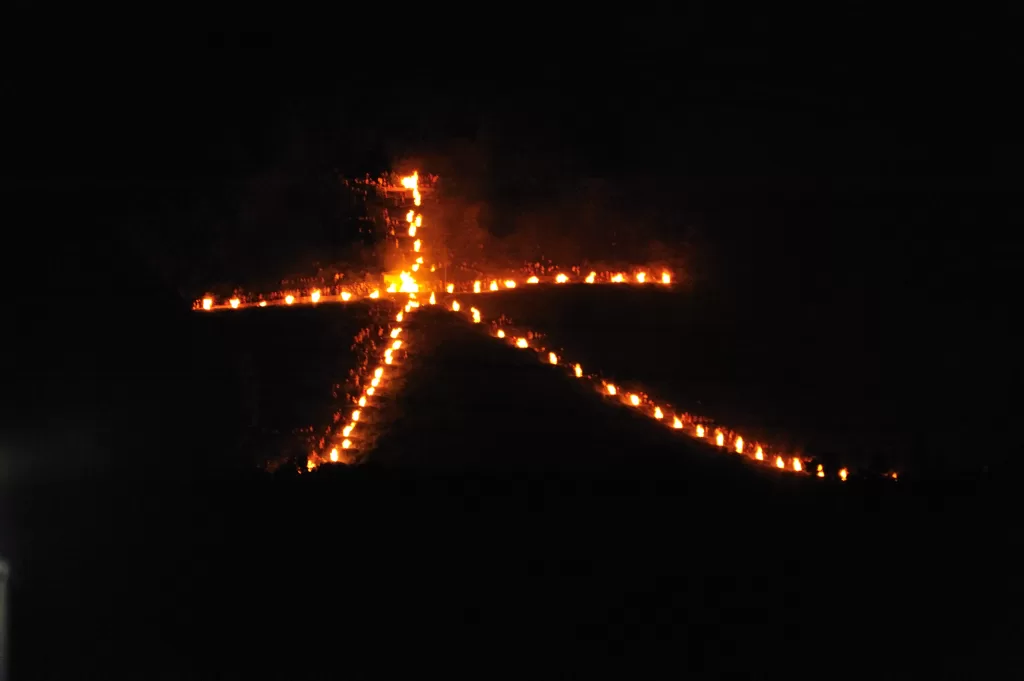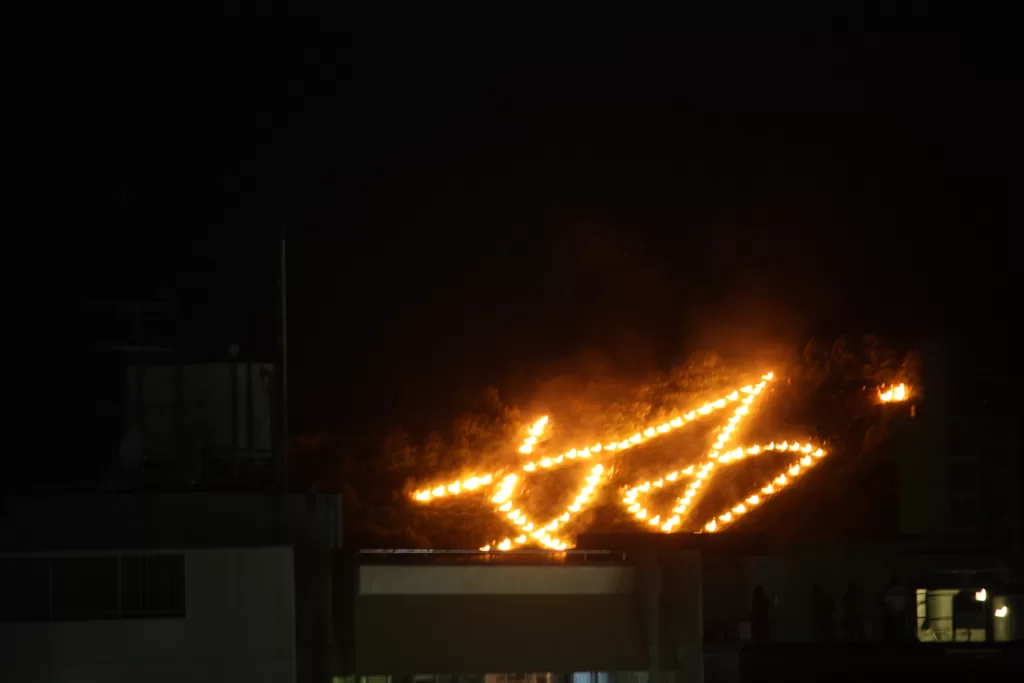Kyoto Gozan Okuribi: A Solemn Festival of Fire and Tradition

Honoring Departed Souls
Kyoto, Japan’s ancient capital, hosts a unique festival annually on August 16th called the Kyoto Gozan Okuribi (五山送り火), also known as Daimonji (大文字). This solemn and traditional event, part of the Obon holiday, marks the moment when the spirits of deceased family members are believed to return to the spirit world. The giant bonfires set on five mountainsides serve as a guiding light for these ancestor spirits and represent the deep bond between the living and the dead.
Ancient Origins and Preparations
The origins of the Gozan Okuribi date back to the 13th century, though its exact beginnings remain obscure. Ceremonies and rituals surrounding this event center around gomaki (護摩木), cedarwood strips onto which prayers and names of deceased loved ones are written. These strips are collected before the festival from various temples across Kyoto and transported by volunteers to be burned as part of the bonfires. It’s definitely one of the most awaited Kyoto events in August.
The Giant Bonfires: Kanji Characters and Symbolic Shapes
At 8 PM on August 16th, five enormous bonfires are lit atop mountains surrounding Kyoto. Three mountain fires display giant kanji characters 大 (dai “large” or “big”), 妙 (myō) and 法 (hō), while the other two form familiar shapes: a boat shape on Mount Funa-Yama in Nishigamo (funagata 舟形) and a shrine gate shape (toriigata 鳥居形) on Mount Mandara-yama. The characters and shapes are designed to burn for approximately 30 minutes, creating a magnificent sight visible from across the city.
Viewing Spots and Recommended Locations
While each bonfire can’t be simultaneously seen from one location, several popular viewing spots scattered throughout Kyoto offer glimpses of the event:
- Daimonji: Banks of the Kamogawa River between Marutamachi and Misono bridges provide an excellent view.
- Myōhō: Kitayama Street near Notre Dame Elementary School and the Takano River’s north side.
- Funagata: Kitayama Street near Kitayama Ohashi Bridge in northwest Kyoto.
- Hidari Daimonji: Nishioji Street between Shijo and Kinkakuji areas.
- Toriigata: Around Matsuo Bridge or near Hirosawa Pond.
Visitors can also book hotel rooms or restaurants with rooftop views of the festival, though spaces are limited and advance reservations are necessary.

A Unique Experience Amidst Tradition
Gozan no Okuribi offers a profound sense of connection with tradition and a glimpse into Japanese culture’s depth by highlighting the link between the living and their ancestors. If you find yourself in Kyoto during Obon season, make sure not to miss this extraordinary event as its ethereal beauty is sure to leave a lasting impression.
Also, if you’re into Japanese culture, you don’t want to miss the Matsu-age Torch Lightings, held annually during the month of August.